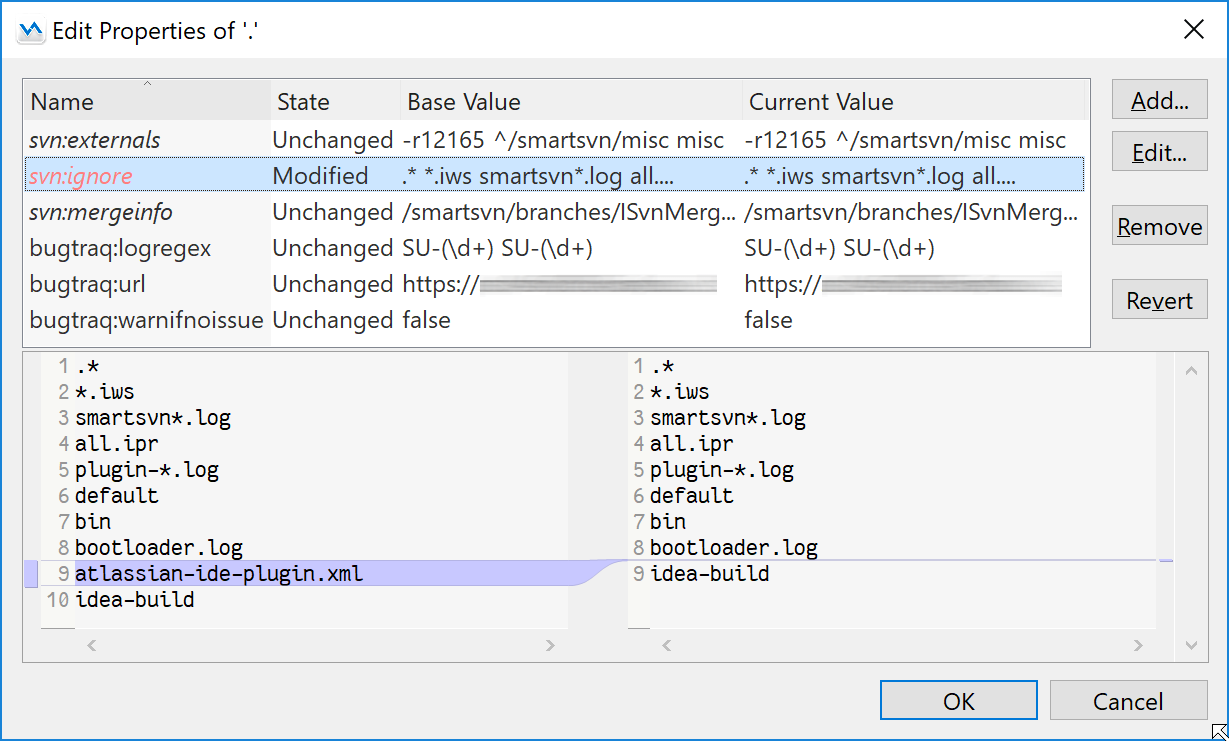

Kudos to Marcel Groeneweg for his upvoted idea about this on the Mendix Idea Forum! This can be used to leverage device or browser APIs, extend nanoflows with custom logic, perform complex calculations, and explore many other possibilities.
#SMARTSVN DIRECTORY ALREADY LOCKED PRO#
Studio Pro 8 now supports extending the platform via JavaScript actions that allow you to write custom activities for nanoflows in JavaScript. JavaScript ActionsĮxtensibility is an important capability of Mendix, and JavaScript actions is a powerful new feature for Mendix 8. The Mendix Native App Template is used by the Native Builder which means it will be consistently updated to support the latest native Mendix features. This repository acts as a template for building Mendix native mobile apps, and as a guide for users who want to include native Mendix functionality in their own apps. Mendix Native App TemplateĪdvanced users can now make direct use of our Mendix Native App Template. We are heavily invested in streamlining the experience of building your apps and are continuously improving upon the tool’s capabilities. The Native Builder uses MxBuild, GitHub, and App Center to simplify the app building process. After the Native Builder simplifies your build process, you can do what you want most: test and publish your app. The Native Builder is a command line input tool which helps you build your Mendix native mobile app. We will continue to improve and extend their functionality. The Mendix Make It Native app is available from Google Play and Apple Marketplace. For advanced information on debugging with the Make It Native app, see Debug Native Mobile Apps (Advanced)

For an introduction to the Make It Native app, see Get Started with Native Mobile. This speeds up communication, debugging, and allows ideas to become reality more quickly. The Make It Native app allows you to preview your apps while still in development. The Mendix Make It Native app is the companion app for Mendix native developers who want to streamline their development process.

This app template contains everything you need to quickly get started: a preconfigured native navigation profile, a large variety of mobile-specific widgets, and nanoflow activities that let you leverage your device’s capabilities. To start creating a native mobile application, we recommend creating a new project based on the Blank Native Mobile App. For more information on styling, see the Native Mobile Styling Reference Guide. Note that native styling is based on JavaScript instead of Sass/CSS. This means your app will look great out of the box, while you will still fully control your app’s styling. The native theme and styling is part of the Mendix Atlas UI framework. The new Native mobile navigation profile type has been added next to Hybrid mobile, which is still supported and available. Mendix native mobile apps are offline-first, which means they work regardless of their internet connection. These native mobile apps offer fast performance, smooth animations, natural interaction patterns (like swipe gestures), and improved access to all native device capabilities. Mendix now enables you to build true native mobile apps as easily as you build other apps with Mendix. If you prefer to disable the file-lock feature, specify the ANSYS_LOCK=OFF environment variable in your config60.ans file.For more information on this release, see the General Availability of Mendix 8 Arrives - with Native Mobile, AI-Assisted Development, and More! blog post. In batch mode, the program exits, leaving the lock file intact.ĪNSYS creates and checks for lock files by default. In interactive mode, ANSYS displays a dialog indicating that the file is locked, offering the option to override the lock. If you or someone else attempts to open another job of the same name (and in the same directory) as your currently running job, ANSYS detects the existence of the lock file and does not open the new job. The lock file exists for as long as your job is running. When you open a job (jobname) from a given working directory, ANSYS creates a corresponding lock file called jobname.lock in that directory. File locking helps to prevent you or another user from inadvertently opening a new job with the same name and in the same working directory as a currently running job. To protect against data loss, the ANSYS program employs a file-locking mechanism.


 0 kommentar(er)
0 kommentar(er)
